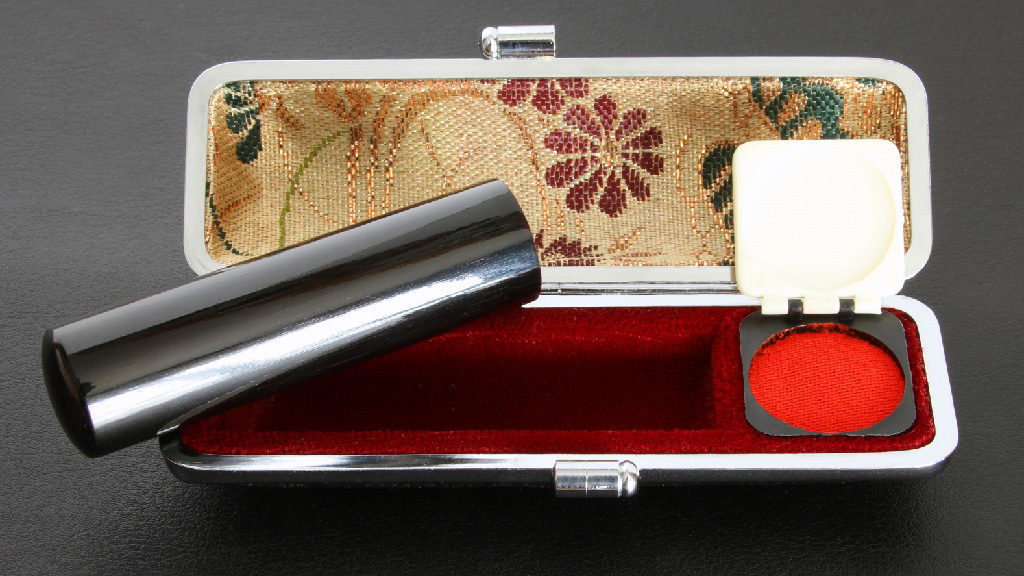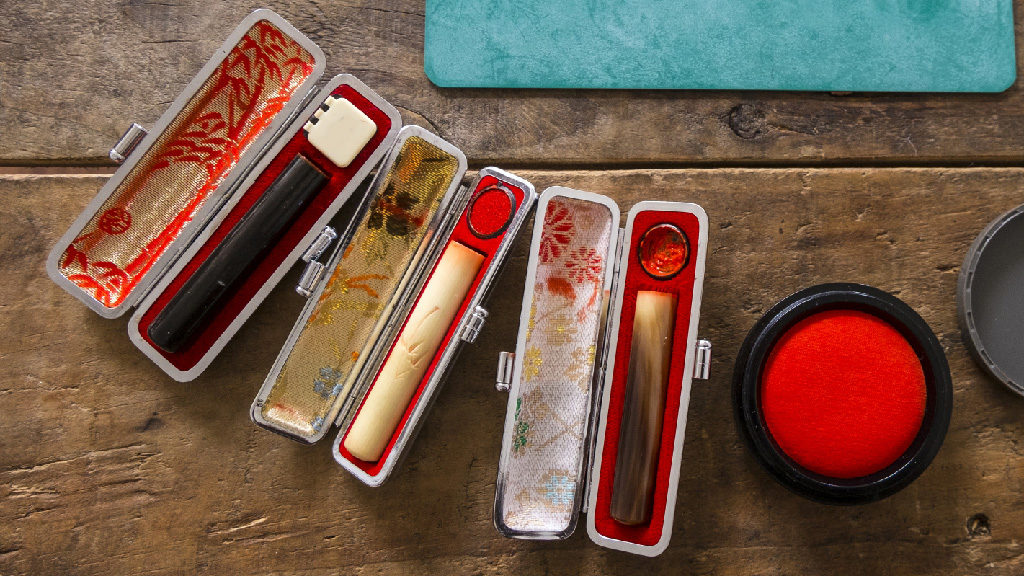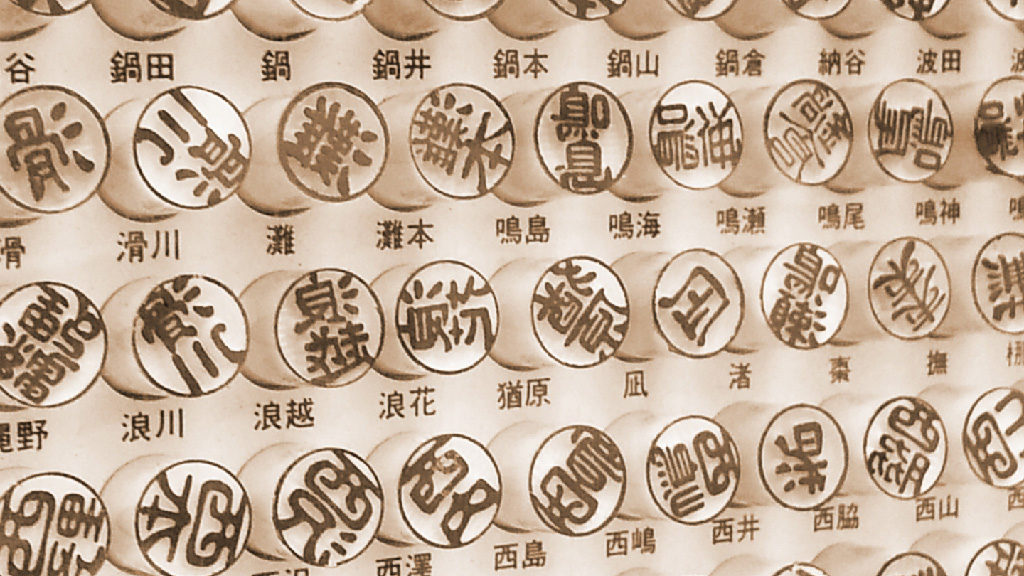Differences in the types of seals and usage

This post is also available in 日本語
A “Hanko/Inkan, ” (a personal seal) is required in Japan on many occasions in daily life. Your signature my be accepted in some cases but it’s not too popular, yet.
We show you what you should know when you make a “hanko.”
Contents
What is a “Hanko”?

This works like a signature to show that the holder agrees, approves, or confirms to the contents a paper. “Hanko” looks like a short stick with your name or company name inscribed on the end. You use a special red stamp pad called “shuniku” to print on documents.
Incidentally, a “hanko” and an “inkan” have different meanings originally, but they are interchangeably used in daily life. Therefore, when someone ask you to bring an “inkan”, a “hanko” will do.
Which kind to use on which occasion?

There are approximately three kinds of “hanko.” They are “jitsuin”, a registered seal, “ginkouin”, a bank seal and “mitomein”, an acknowledging seal which is for daily use. As these are used in different occasions, and considering a risk of losing or counterfeited, to prepare three different seals is ideal. However, it’s a common practice to make three same ones, or make “jitsuin” and “acknowledging seal” and use one of them as a bank seal.
“Jitsuin”:
This is the most important one to be used to purchase a property and a car, to buy a policy or receive money from insurance. This one need to be registered at a local city office where you have your resident registration so that it has a legal effect.
You need to make your own because you cannot share the “Jitsuin” with others. To not to be forged, you need to choose a trustworthy shop. As you are required to re-register you’re your “Jitsuin” chips, the material has to be very tough.
There may be different rules regarding the size, the image and the inscription style among local government offices.
“Ginkouin”:
This is the seal you register with the bank when you open an account. You don’t need to carry this as long as you use your cash card, but you need to present it when you do some procedure at the bank.
“Mitomein”:
When you acknowledge a receipt of a delivered package or you show that you have seen the document at office, you stamp the “mitomein” frequently in your daily life. You will find readily made “hankos” for common Japanese family names at stationary stores.
“Hankos” come in two types, the one you need to use a stamp pad and the other one with built-in ink. The latter is called “Shachihata” which is an ink saturating seal. “Shacihata” is the name of the leading manufacturer but all of this type of seals called by this name.
“Shachihata” is very easy to use but you cannot use this as a “Jitsuin” or “Ginkouin” and you must be aware that there are many documents saying no “Shachihata” seal.
Where to get “Hanko”?

These ordinary stationary shops or 100-yen shops carry ready-made “hankos” only for common Japanese family names. Foreigners are advised to order at a “hanko” specialty shop or through internet shops.
For a registered seal “Jitsuin”, the inscription has to be either your full name, your surname, or your given name, all of which are same as your Residency Card. If your Residency Card only shows your name in alphabet, you cannot use ‘katakana’ for your seal. In case of a bank seal “ginkouin”, you need to follow the rule of the bank. When you select a “Hanko“ shop, you need to consult beforehand with the local government office or a bank what material and the inscription design are accepted respectively.
On the other hand, the “Hanko” you are making is only for an acknowledgement purpose, it can be in alphabets, katakana, and phonetic equivalent in Kanji. As an extreme example, you could use other person’s name or an illustration. However, it’s advisable to avoid anything very different from your name considering that it’s also used as an acknowledgement purpose, too. For an example, if you acknowledge a receipt of a delivery by using a “Tanaka hanko” when it was addressed to “Smith” the delivery person will be confused and suspicious.
Upon understanding of the “Hanko”, you are free to enjoy making a registered seal “Jitsuin” in alphabets for an example and a “Mitomein” inphonetic equivalent of “Kanji”character.
Related products



- If You Wonder What Should Give a Gift, This Is the Best Choice! Cool Packaged Handkerchiefs!
- Apply on UV Cream Without Getting Your Hands Dirty! Why not Have This Handy Puff?
- So Popular Character “Chiikawa” Cheers You Up! Improve Your Arched Back!
- If You Want to Improve Your Sleep Quality, You Should Change Your Pajamas! 3 Recommended Pajamas
- Conveniently 2-Way! This Product Is Useful in Both Summer and Winter.









